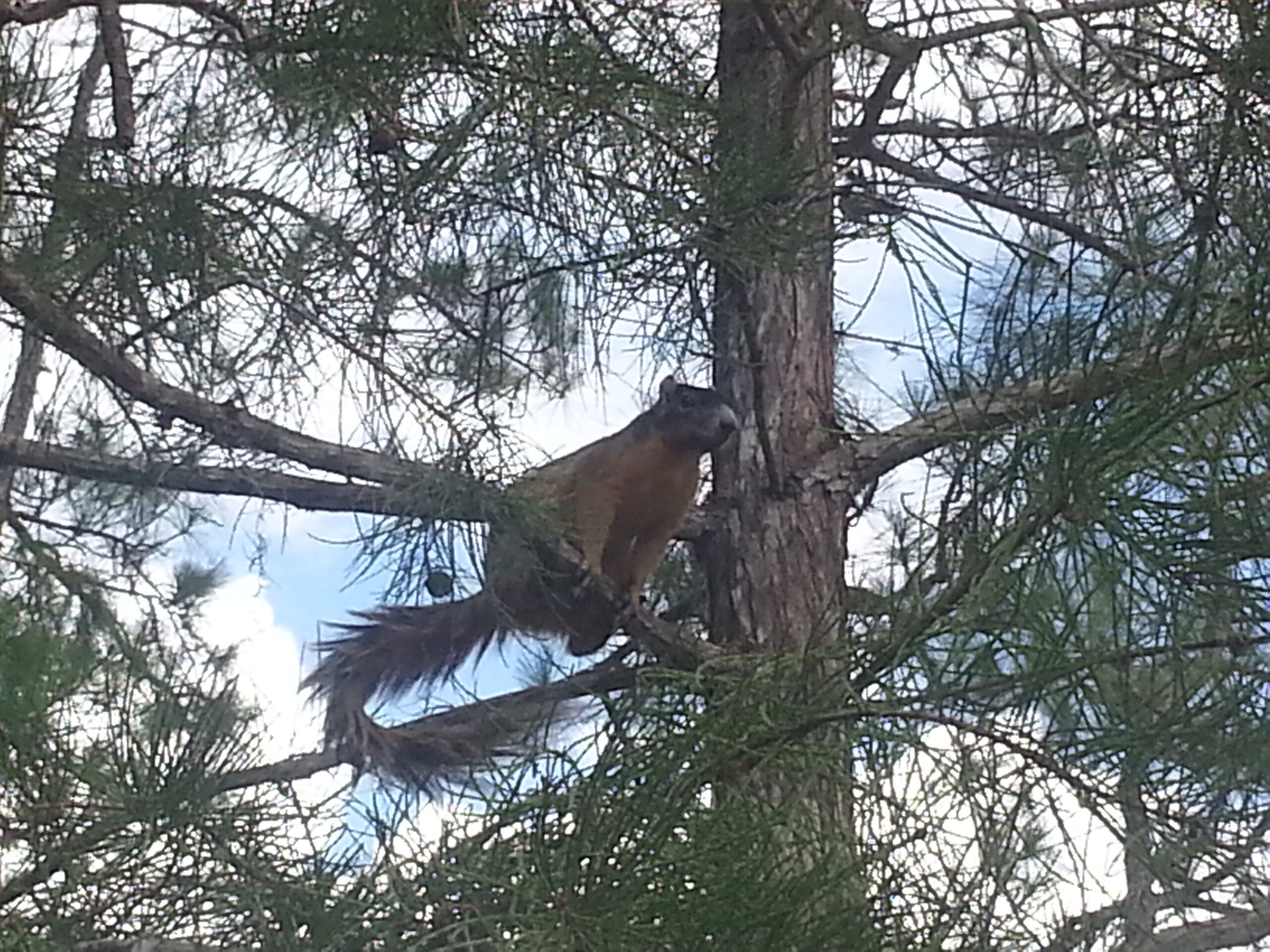Scientific Name: Sciurus niger (fox squirrel)
The fox squirrel (Sciurus niger) weighs from 1 to 3 pounds and exhibits different color variations that ranges from a light brown color to gray, and in some instances black. The under parts are usually lighter and have white noses and ears with black faces and feet. They are noted for their long, bushy tails and for their strong hind legs that allows them to jump easily from place to place. The skull of the fox squirrel has 20 teeth: gray squirrels have 22 teeth.
Both species are found throughout Florida. The fox squirrel may be found in open woods, pine and cypress stands, and mangrove swamps. Of the three subspecies found in Florida, two are listed as protected species. Sherman’s Fox Squirrel, Sciurus niger shermani, a species of special concern, is found in the open piney woods of central and Northeastern Florida. The Big Cypress Fox Squirrel Sciurus niger avicennia, a threatened species is found in the Everglades region, in Lee county, to Dade county. Fox squirrels in the western panhandle belong to a less vulnerable, more widespread subspecies.
The diet of the fox squirrel consists of plant material such as nuts, seeds, fungi, fruit and buds. They have also been known to occasionally eat animal material such as insects and bird eggs.
The fox squirrel breeds in the late winter months and mid-summer months and only mate once a year. Both species litters vary from 1-7 but usually having 1-3. With the fox squirrels their young are weaned at 2 to 3 months. Both species of squirrels have different ways of communicating, which may include a squeak like that of a mouse, a low-pitched noise, a chatter, and a raspy “mehr mehr mehr”. Other methods of communication include tail-flicking. Communications are mainly used in mating season and to ward off predators. There are far less fox squirrels than gray squirrels but can sometimes be seen searching for food in pastures or openings nearby forests. They spend more time on the ground than in trees and often attempt to escape enemies by running rather than climbing. Both the eastern gray and the fox squirrel build a type of nest, called a drey, in the forks of trees, consisting mainly of dry leaves and twigs. Fox squirrels are strictly diurnal and non-territorial, they spend more of their time on the ground than most other tree squirrels. However, They are still agile climbers.
Both the fox squirrel and the eastern gray squirrel carry several parasites such as lice, mites, protozoa, fleas, acanthocephala, mematoda and cestoda. The one disease that squirrels are known to be carriers of that affect humans is a form of typhus. Squirrels are not associated with rabies or any other disease that can affect humans.
They may also nest in attics or exterior walls of a house, where they could cause fire hazards from their habit of gnawing on the electrical wiring.
The fox squirrel probably was named after the fox because of its comparatively large size and peculiar way of running along the ground which gives the appearance of a small fox. Due to over hunting and the destruction of forests, fox squirrels are endangered.
They do not hibernate. The eastern gray squirrel is one of very few species that can descend a tree head-first.

